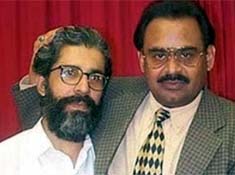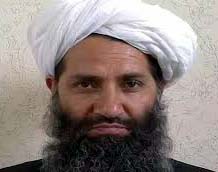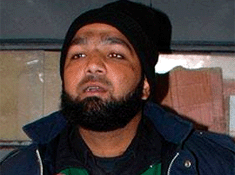Five years later: Saleem Shahzad’s unsolved murder case further weakens press freedom

ISLAMABAD: (Asia Times): Five years down the road since the May 2011 brutal killing of Pakistani journalist Syed Saleem Shahzad, who was Islamabad Bureau Chief of Asia Times, nothing seems to have changed for Pakistan’s media which continues to be weakened further in the wake of multiple threats to its freedom and the worst kind of harassment.
The poor state of media freedom in Pakistan can be gauged from the fact that many upright journalists have been forced in recent years to abandon their homeland or go into hiding, fearing for their lives. According to 2016 World Press Freedom Index released by the Reporters Without Borders (RSF), Pakistan ranks number 147 out of 180 countries. According to the findings of the International Federation of Journalists (IFJ), Pakistan is the fourth most dangerous country for media. Being one of the most unsafe countries to practice journalism, Pakistan has already been selected as one of five pilot countries in the world to implement a UN Plan of Action on Impunity Against Journalists. The truth remains that many high-profile cases of state violence against journalists, including the May 2011 slaying of Saleem Shahzad and the April 2014 murder attempt on Pakistan’s top TV anchor person Hamid Mir, remain unsolved which have reinforced a climate dominated by death threats and physical attacks, mostly by the powerful state agencies.
50 more journalists have died
In the 60 months since the tragic murder of Saleem Shahzad, nothing solid seems to have been done by the Pakistani authorities to minimize the risks Pakistani media persons must take and the heavy price they pay to be the guardians of the public interest. Neither have Saleem Shahzad’s assassins been identified and punished nor have the recommendations the Inquiry Commission had made in the case been implemented, with 50 plus more journalists being killed across Pakistan since his assassination. The Saleem Shahzad Inquiry Commission’s report dealt with everything, except for unmasking the killers. The Commission was actually tasked to determine who was responsible for the murder. But in its final report, the Commission failed to do so.
The five-member Inquiry Commission comprised two judges, Supreme Court’s Justice Mian Saqib Nisar, who also chaired the Commission, Chief Justice of the Federal Shariat Court Justice Agha Rafiq Ahmed Khan; two senior police officers and one journalist. The 146-page Commission report gave page after page of recommendations and proposals on how to fix the “systemic causes of tension between agencies and the media.” While suggesting steps to make the intelligence agencies law-abiding, the Inquiry Commission observed: “The ISI must deflate its larger-than-life image, focus on its mandated job and evolve a transparent policy in its liaison with the media. However, despite consuming six months, holding two dozen meetings, examining 41 witnesses, and accessing more than 33,000 emails of Saleem Shahzad, the motive behind the murder could not be conclusively drawn.
About the possible reasons behind his brutal murder, the Commission said: “In all likelihood, the motive behind Saleem Shahzad’s murder was provided by his writings.” The journalist’s body, bearing marks of severe torture, was found near Mandi Bahauddin, 130 kilometres southeast of Islamabad – two days after his disappearance on May 29, 2011. His post-mortem report, prepared by a team of three doctors, found that Saleem died soon after being kidnapped. According to Dr Farrukh Kamal, who headed the autopsy team, “There were at least 17 wounds, including deep gashes … The ribs from the left and right sides seemed to have been hit with violent force, using a blunt object. The broken ribs pierced Saleem’s lungs, thus causing the death.”
Frontline reporter
Like hundreds of other journalists around the world, Saleem Shahzad got his break with 9/11 terror attacks. He started reporting on the war against terror and soon found his calling in life. From the war-stricken Kabul to Baghdad, Shahzad loved to put himself in the thick of things. Years of reporting on al-Qaeda and its affiliates based in Pakistan convinced him that the 9/11 episode had caused an ideological split of sorts in the Pakistani armed forces. Two days prior to his abduction, Asia Times published a report by Saleem Shahzad titled “Al-Qaeda had warned of Pakistan strike,” which proved to be his last.
The report claimed that Pakistan Navy personnel sympathetic to al-Qaeda had facilitated the May 22, 2011 terror attack at the Mehran Naval base in Karachi, which headquarters Pakistan Navy’s Naval Air Arm installation. The fedayeen attackers of al-Qaeda not only killed 18 military personnel but also destroyed two American-built P-3C Orion surveillance aircraft, worth billions of rupees. Saleem reported that al-Qaeda decided to attack the naval base after the failure of its talks with navy officials for the release of several naval personnel, already arrested for links with al-Qaeda. Saleem began receiving threatening phone calls from ISI spooks shortly after the report was published. The ISI wanted to ensure that the second part of the report did not appear. Saleem was kidnapped within 48 hours of the first part of his report being published. He would have dispatched the second part of his report in the week beginning May 30, 2011. Yet his captors wanted to do away with him before that.
Plot to sink ships
Saleem Shahzad’s dead body was subsequently recovered on May 31. Almost 40 months after his brutal assassination, al-Qaeda carried out yet another attack [on September 6, 2014], this time targeting the Karachi Naval Dockyard. The attack was meant to take control of two important warships of the Pakistan Navy — PNS Zulfiqar and PNS Aslat — and to utilize them to destroy an American oil tanker and an Indian warship with anti-ship missiles. The attack proved Saleem’s contention that al-Qaeda has deeply infiltrated the Pakistan Navy ranks. The South Asian chapter of al-Qaeda claimed responsibility for the audacious attack and made public the name of a serving officer of Pakistan Navy — Second Lieutenant Zeeshan Rafeeq — claiming that he had spearheaded the bloody operation [that killed several navy officers] along with a former second lieutenant, Oweis Jakhrani.
ISI warnings
Appearing before the Inquiry Commission, some close aides of Saleem had accused the ISI of involvement in the murder, saying that he had been abducted and tortured to extract the source of his article about al-Qaeda’s infiltration into the navy ranks. While the ISI vehemently denied any role in the murder, the Pakistan representative of the Human Rights Watch (HRW), Ali Dayan Hasan, instantly came forward with a claim that Syed Saleem Shahzad had been abducted by the ISI. What really had tongues wagging against the ISI was his disclosure – on Oct. 17, 2010, that he had been summoned to Islamabad headquarters of the ISI by the Media Management Wing of the spy agency, which wanted to discuss his report (Pakistan frees Taliban commander, Asia Times Online, Oct. 16, 2010) wherein he claimed that the Pakistani authorities had quietly released a key leader of Afghan Taliban, Mullah Baradar, to take part in the Afghan peace talks.
Those who questioned Saleem Shahzad at the Rawalpindi headquarters of the ISI were two navy officers. The Human Rights Watch made public the late journalist’s last email to its Pakistan representative, apprising him of the threats he was hurled at in a meeting with two senior officials of the Media Management Wing of the ISI. “I must give you a favor. We have recently arrested a terrorist and have recovered a lot of data, dairies and other material during the interrogation. The terrorist had a hit list with him. If I find your name in the list, I will certainly let you know.” These were the words of DG Media Wing of the ISI, Rear Admiral Adnan Nazir, quoted by Saleem, in his e-mail to Human Rights Watch on Oct. 17, 2010. These chilling sentences were said to him at the end of his meeting with the director General of the ISI’s Media Wing, after his refusal to divulge his source for the story. Saleem was asked to retract the story, as it was a cause of embarrassment for the Pakistani military establishment, which he refused to do, only to be abducted by ISI and killed eventually.
Spy agency’s dodge
Following Saleem Shahzad’s murder and the subsequent accusations of ISI’s possible involvement, the agency had justified his summoning to its headquarters in these words: “The meeting between the journalist and the ISI officials of the Information Management Wing was held to discuss a story he had done for Asia Times Online in October 2011, and the meeting had nothing sinister about it. It is part of the Wing’s mandate to remain in touch with the journalist community. The main objective behind all such interactions is the provision of accurate information to them on matters of national security. The ISI also makes it a point to notify “institutions and individuals alike of any threat warning received about them.”
But the Saleem Shahzad Inquiry Commission’s report seemingly rejected the ISI’s contention and stated: “When so many senior journalists have come forward to record their perception, that they found certain words, gestures and acts of ISI officials as intimidating and threatening, it is hard to dismiss it lightly, merely on account of a bald denial by the ISI.” The Commission, however, noted that “the strong perception in journalist community that the ISI has had a motive to kill Syed Saleem Shahzad may hold some weight, but there is no tangible evidence to establish that fact.”
But the Human Rights Watch had blamed the Inquiry Commission of being fearful of confronting ISI over Saleem Shahzad’s death. “The failure of the Commission to get to the bottom of the killing illustrates the ability of the ISI to remain beyond the reach of the Pakistani criminal justice system,” HRW’s Asia director Brad Adams had said in a statement. In a bid to defame Saleem Shahzad as a possible US agent, the ISI statement to the Inquiry Commission stated: “Why from President Obama to every man worth a name in the US felt disturbed in this case. Was he a pawn who could be used at appropriate time to further use American objectives and create a wedge between the establishment and other segments of society?”
Since no defamation of a Pakistani journalist can be completed unless he is labelled as an Indian agent, Brig Zahid Mahmood of the ISI had said in his statement before the Inquiry Commission: “Though I don’t have any concrete evidence, but Saleem Shahzad had stated in my presence that he was approached by Indian intelligence agency (RAW) and now he has to present a paper in UK on which he wanted the input of the ISI.” According to the brigadier, Saleem told him that he was in contact with the British intelligence agency.
Abbottabad connection
On the other hand, however, an American magazine, the New Yorker, had claimed in its Sept. 11, 2011, issue: “The order to kill Pakistani investigative journalist Saleem Shahzad came from a senior officer of the Army Chief General Ashfaq Kayani’s staff.” Authored by Dexter Filkins, the report said Saleem Shahzad had angered the Pakistani authorities by writing about al-Qaeda infiltrating Pakistan’s Navy at a particularly sensitive time as the country’s leaders were reeling from the humiliation of the May 2, 2011 raid by US Special Forces that killed al-Qaeda leader Osama bin Laden inside Pakistan.
Actually, deep in the report, the Inquiry Commission said that Hamza Ameer, the brother-in-law and complainant in the murder case, and Anita Saleem, Saleem Shahzad’s widow, “were the two most important persons who should have indicated the motive.” A beeline of journalists and prominent personalities had appeared before the Inquiry Commission to record their statements. Many of them, including Hamid Mir [who was shot six times in a failed assassination attempt] two years after Saleem’s murder, gave testimonies to the effect that ISI personnel harass and sometimes even threaten journalists. But Saleem’s widow, Anita Saleem, had refused to appear, saying: “We don’t have any expectations from the investigations.”
Empty murder probe
The Freedom Network [FN], which is Pakistan’s first watchdog on media rights, recently interviewed Saleem’s brother-in-law, Hamza Ameer (who himself is a journalist) to monitor progress in Saleem Shahzad’s murder case. According to Hamza, there is hardly any progress in the murder probe. “Maybe it has become old news for our media. For us, the only new thing is that after the passage of a year whenever a new SHO [station house officer] comes in [at the police station], he calls me up and asks for any new information that might help him solve the still pending murder case and says there is no progress on the case. Our family does not have any hope for getting justice.”
Asked if his family was satisfied with the end result of Saleem Shahzad Inquiry Commission, Hamza Ameer said: “Not at all. We had raised an objection that the Commission was incompetent. The Commission was not powerful enough to properly probe all the factors raised during the investigations. It was asking us all the time to name suspects without evidence, though it was their job. We didn’t have any hope from it. The only hope we had was that when the Commission would come out with its findings and recommendations that the same media, which stood with us initially, would again pick it up. But this didn’t happen. Today Saleem Shahzad’s name comes up sometimes in international media but rarely in Pakistan.”
The ISI has long been considered to use and abuse media as puppets in internal battles to shape public opinion about important national issues. But the current scene for media freedom in Pakistan, especially after Saleem’s murder, is on a downward spiral. The Media Management Wing of the ISI now closely monitors not only newspaper reports but also news channels. A number of tactics come into play when the media loses the script. Threats are called in and unruly journalists working against the “national interest” are abducted and subjected to torture. The operational wing of the Pakistan Army — the Inter Services Public Relations (ISPR) – acts like a sophisticated machine which has established different wings like one dealing with private TV channels, another with FM stations and yet another with print media.
Press freedom’s downward spiral
The media is also given a clear policy line on each national issue. The ISPR regularly gives directions to the media moguls, editors and news editors as to which news item should be downplayed and which twisted and highlighted. The efforts by the ISI and the ISPR to pressure journalists into reporting the news in a certain way has led to the undermining of public confidence in the truth as represented by Pakistani media. In short, five years after Saleem Shahzad’s murder, the state of media freedom has gone from bad to worse, with the ISI becoming a classic overgrown covert operations security agency which gives dictation not only to the media but also to the civilian government. Under these circumstances, there is an urgent need to implement the Saleem Shahzad Inquiry Commission’s recommendation that all intelligence agencies should immediately be made accountable by the government through parliamentary oversight and judicial redress after appropriate legislation.
Amir Mir is a senior Pakistani journalist known for his research work on Islamic militancy and terrorism in Pakistan. He has authored several books including “Talibanization of Pakistan: From 9/11 to 26/11,” “The Bhutto Murder Trail: From Waziristan to GHQ,” “The True Face of Jehadis” and “The Fluttering Flag of Jehad.”
(Copyright 2016 Asia Times Holdings Limited, a duly registered Hong Kong company. All rights reserved.)




